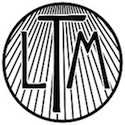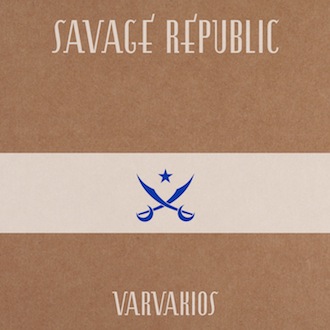17 Pygmies \ Biography
17 Pygmies came into being in 1982, when Savage Republic member Philip Drucker (aka Jackson Del Rey) began jamming with Michael Kory and Debbie Spinelli at UCLA. 'We were all students at that time,' recalls Spinelli. 'Phil, myself and also Robert Loveless worked together in the basement of Royce Hall at the University's Audio Visual Services. Phil was already working on songs with Michael. I think they were rehearsing or playing tapes and I was invited to join as the drummer. We were focused on recording more than playing shows, which I liked.'
The Pygmies first piece was an odd, surfadelic cover version of the epic theme from Lawrence of Arabia. With no-one around to say stop, the band quickly devolved into a kind of spooky, cross-cultural instrumental band, and issued 1000 copies of debut EP Hatikva through Resistance Records, their own label, in September 1983. The artwork came courtesy of Robert Loveless, also a member of Savage Republic, with the sleeves printed by Bruce Licher of Independent Project Press, and hand-coloured by the band members.
'I write basically simple songs,' Drucker confided to the Los Angeles Times. 'I just set up these wide-open spaces for the others. I have faith in their abilities to write cool stuff. I don't worry about what they're going to do.'
Indeed closing track Vows ended up being sung by Spinelli. 'Kory and Jennie Tsao had written Vows before 17 Pygmies,' she explains. 'When we were in the studio working on that song, Michael and Phil had tried singing the vocal, but we weren't happy with the sound. They talked me into trying a pass. We jokingly called the EP Debbie Sings for awhile, because I was NOT a singer. All I can say is, it was fun at the time and I did my best.'
During 1983 Drucker and Loveless also co-wrote several tracks intended for the second Savage Republic album, but as founder Bruce Licher explains: 'It became really obvious that what Phil wanted to do and what I wanted to do were radically different, so we split up. Phil and I reached an agreement whereby he and Robert would keep the music that they had worked up, and Mark Erskine and I kept the name. By the Sea was called March or Die originally in SR, and I think Nocturne had another title as well. So, yes, six tracks on what eventually became Jedda By the Sea did start off as what was supposed to be the second Savage Republic album.'
As a result Loveless joined Drucker in 17 Pygmies on bass and keyboards, while Michael Kory left the band. Jedda By the Sea was recorded in the spring of 1984 at Contour Studios in Marina Del Rey, and Sound Solution in Santa Monica. Always an amorphous collective, Jedda also featured violins and keyboards from Russell Jessum, and flute from Fey Ruza. 'Russell, Fey and I were also in a band together at this time called Food & Shelter,' explains Spinelli. 'Russell studied music at Cal Arts and was the booker & originator of ANTICLUB, which presented a lot of art/punk/performance shows in the 80s and 90s. It was an important venue.'
While Jedda might have been short on the letter H, it was long on musical innovation, and made waves both at home and abroad. 'Jedda by the Sea is one of the most charming local albums of the year,' enthused the Los Angeles Times. 'The consistently inventive music borrows from various Irish, Arabian and African influences while maintaining a homey simplicity with its lush organ chords, occasional violins and bits of tribal percussion. This is the kind of gracious music that can fill space without intruding on it.'
Across the Atlantic, New Musical Express also lauded 'a collection of vivid technicolour memories, effectively re-creating the golden era of popular American film music, it's Bacharachian overtures nothing less than stunning.'
By the end of 1985 17 Pygmies had still only performed live around ten times, though a show in spring of 1986 at McCabe's Guitar Shop in Santa Monica was favorably reviewed by Bob Remstein. 'They play quiet, moody music that draws on Arabian, Indian and African folk music, but which often approaches the area of Sixties psychedelic rock. The Pygmies started off shakily but eventually won over the rather artsy audience with their simple but engaging brand of music. Most of the vocals are done by drummer Debbie Spinelli, the liveliest member of the group. Her thin, dreamy voice fits well with the mysterious moods that the band creates, and her drumming propels the whole band. It's powerful, clean and constantly active. Robert Loveless' assured keyboard playing provides the band's foreground - it's amazing how many distinct sounds and moods he can suggest with just two small synthesizers. At a time when innovation in music is on the wane, and most groups are joining each other on a few crowded commercial bandwagons, it comes as a refreshing surprise to discover a group of musicians who concern themselves solely with their music, not their image.'
October 1985 brought sophomore album Captured In Ice (working title: Madrid) which featured Fey Ruza as a full member, and synthpop non-hit Chameleon. Guest musicians included Nels Cline of Quartet Music, Ethan James of Blue Cheer, and Jeff Tepper, formerly of Captain Beefheart's Magic Band. This musical-chairs musical style worked well thanks to a casual attitude toward studio collaboration. The only small thing about the Pygmies seemed to be their egos.
'Frankly, Captured in Ice is one of my least favourite albums,' admits Drucker today. 'But it sold 2000 copies in three weeks. We were literally inept at releasing records, didn't even reprint it. If a record ran out we just looked questioningly at each other. Rhino Records, the famous record store in LA, had posters in the window, and sold 150 copies alone in a week. The owner gave me a lot of advice: Do this, do that, sign a contract with a major label.'
'I agree with Phil that Captured in Ice is not a favourite of the Pygmy records,' Spinelli confesses. 'Although there are several great songs on the album, in my opinion most of the material is dominated by vocals and the sound is trying too hard to be commercial. To me Chameleon, Icarus, Autumn Cathedral and The Far Country are the more interesting pieces.'
That said, at the time the band considered the album 'a cohesive collage of sound and theory', and critics held the album in high esteem. The LA Weekly found it 'super-listenable' and 'sweetly spare', while LA freesheet Reader praised an album that 'easily reaches beyond mainstream musical tastes without necessarily leaving that audience behind.' Meanwhile Rockpool discerned: 'Four giants of musical brilliance with twelve songs of decidedly minimal music, creating an elaborately-embroidered tapestry of visionary sounds. Never does the music get lost in the ozone of extreme esotericism or eccentricity, instead you have four people approaching pop music in a fresh and excitingly individual light. I highly recommend a British licensing deal and I dare any major label to take pursuit.'
Island Records took note, though shifting priorities exposed divisions in the tribe. '17 Pygmies wasn't really a band in the usual sense of the word,' explains Spinelli. 'We were all involved in other projects musically at this time. Moreover we were not playing shows or rehearsing regularly, so I think the material became less cohesive. We would work on songs separately and then get together in the studio.'
Ultimately Spinelli, Loveless and Ruza would depart, leaving Drucker as the only permanent fixture. 1989 saw the release of Welcome on Island subsidiary Great Jones, though the band would be dropped the following year, with their last Island demos issued as the EP Missyfish. Seventeen years later Drucker and 17 Pygmies would return with the double album 13 Blackbirds/13 Lotus, but that's another story...
James Nice





